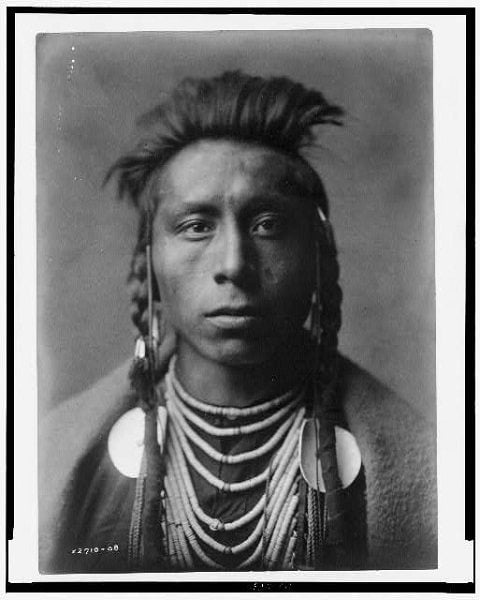Show evidence of this! I don’t want to hear and see pseudo babble!
I want you to explain why Amerindians like Asians exhibit cold adapted body portions and limb ratio, while Black American exhibit tropical adapted body portions. And limb ratio to intermediate, depending on the amount of admixture)
How is it possible there’s no admixture of these Amerindians in Black Americans, or a genetic drift like we see in Amerindians? Neither do we see any bottleneck occurrence.
What we do see is a continuous genetic drift, from mainly West Africa.
'Tropically adapted groups also have relatively longer distal limb elements (tibia and radius, as compared to femur and humerus) than groups in colder climates."
<p><b>The newly revised and thoroughly updated standard source for mastering the human fossil record.</b></p> <p>This new edition of <i>The Human Lineage</i> is the best and most current guide to the morphological, geological, paleontological, and archeological evidence for the story of human...

www.wiley.com
(Matt Cartmill, Fred H. Smith - 2011)
“Thirteen of the 18 haplogroups previously observed in African populations were observed in the African American populations: L1a, L1b, L1c, L2a, L2b, L2c, L3b, L3d, L3e1, L3e2, L3e3, L3e4, and L3f”
Genetic polymorphism along mitochondrial DNA (mtDNA) defines population-specific signatures called mtDNA haplogroups. Estimation of mtDNA haplogroup distribution may be prone to errors, notably if the study sample is not drawn from a multicenter ...

www.ncbi.nlm.nih.gov
(Derek C. Johnson et al., Mitochondrial DNA. 2015 Jun; 26(3): 445–451. , Mitochondrial DNA diversity in the African American population)
“In this context, the Dominican Republic is in line with the observations from other Caribbean and non-Caribbean American regions. All the mtDNA African lineages account for 61% of the maternal haplogroups, with the most frequent mtDNA lineages being the sub-Saharan L1c, L2a, L3b, and L3d, all reaching frequencies higher than 10%.
“Y Haplogroup Diversity of the Dominican Republic: Reconstructing the Effect of the European Colonization and the Trans-Atlantic Slave Trades”
The Dominican Republic is one of the two countries on the Hispaniola island, which is part of the Antilles. Hispaniola was affected by the European colonization and massive deportation of African slaves since the XVI century and these events heavily shaped the genetic composition of the...

pubmed.ncbi.nlm.nih.gov
(Eugenia D’Atanasio et al.)
“SCD occurs among about 1 out of every 365 Black or African-American births. SCD occurs among about 1 out of every 16,300 Hispanic-American births. About 1 in 13 Black or African-American babies is born with sickle cell trait (SCT)”.
Read data highlights about sickle cell disease.

www.cdc.gov
(Source: CDC)
"Earlier studies showed that the prevalence of maxillary midline diastema was greater in African populations than among Caucasians or Asian [21]. Another research reported that a maxillary midline diastema (MMD) occurrence among African Americans is more"
Discover the prevalence and location of diastema among orthodontic patients at UNLV School of Dental Medicine. Explore the impact of ethnicity and arch on diastema cases.

www.scirp.org
(Kyle Cousineau, Tanya Al Talib, Neamat Abubakr Hassan. Retrospective Evaluation of the Prevalence of Diastema among an Adult Population. Open Journal of Stomatology Vol.12 No.6, June 2022)
"According to the study, having mainly African genetic ancestry can reduce a person's chances of finding a donor by up to 60%, and having African copies of HLA genes, which must be compatible with the donor's to make a transplant possible, can reduce them by 75%."
[..]
According to Meyer, the team cannot yet answer the question regarding the degree to which admixture and the percentage of African ancestry hinder a match. "These two things are a little different. What we know is that on average people with African HLA genes tend to have more difficulty than people with European ancestry," he said. "It remains to be seen if there are combinations of European and African chromosomes that can also reduce the probability of a match.”
(Source: News-Medical)
"The study found that white blood cell counts may be low due to a rs2814778-CC variant in the promoter of the atypical chemokine receptor 1-coding gene ACKR1. While this variant is relatively uncommon in individuals of European ancestry, it appears to be found in more than 60 percent of African Americans and is found at especially high frequency in some populations from sub-Saharan Africa.”
(Genomeweb)
“When slaves were brought to the American colonies from west Africa, they often grew various kinds of rice in small gardens to feed themselves. Rice became a cash crop for plantation owners, however, with the advent of a high-quality variety of rice in 1685.”

www.science.org
(Erik Stokstad, Science, American Rice: Out of Africa Slaves may have brought key cash crop with them)
“Okra originated from the Abyssinian center, an area that includes Ethiopia, a portion of Eritrea, and the eastern, higher part of the Anglo-Egyptian Sudan. The crop was probably taken into Egypt by Moslems from the East who conquered Egypt in the seventh century.”
Food Crop Production by Smallholder Farmers in Southern Africa: Challenges and Opportunities for Improvement evaluates traditional cultivation practic

shop.elsevier.com
(Ambayeba Muimba-Kankolongo, Vegetable Production, in Food Crop Production by Smallholder Farmers in Southern Africa, 2018 11.3.1 Origin and Geographic Distribution)



























